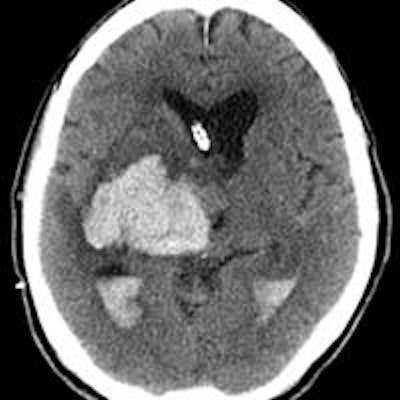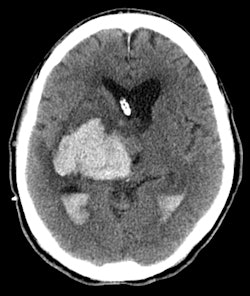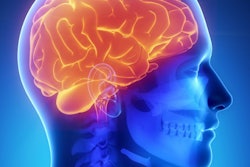
Ordering a second head CT for some patients after the first one turns out to be negative is the smart choice, concludes a study presented on May 16 at the American College of Radiology meeting (ACR 2016) in Washington, DC.
Aiming to inform the definition of what constitutes imaging overuse, researchers from two university hospitals examined more than 1,300 patients in the intensive care unit (ICU) who had a variety of medical conditions. All patients had at least one thing in common: altered mental status.
 Dr. Gelareh Sadigh from Emory University.
Dr. Gelareh Sadigh from Emory University.The results showed that even when the first head CT scan was negative, the second stood a good chance of being positive.
"For this specific group of patients, go ahead and order CT," said lead author Dr. Gelareh Sadigh, a radiology resident at Emory University in Atlanta, in an interview. Sadigh conducted the study along with Dr. Falgun Chokshi and Dr. Richard Duszak Jr.
Questionable clinical importance?
The growth in medical imaging over the past couple of decades is well-documented, and part of it is attributable to inappropriate use of imaging that results in unnecessary costs, radiation, and the discovery of incidental findings of questionable clinical importance, Sadigh told AuntMinnie.com.
ICU patients can be difficult to manage due to their complex situation, and many with altered mental status have different underlying problems causing it. Radiologists look to rule out four major categories:
- Intracranial problems such as stroke
- Metabolic issues
- Reactions to medication
- Infections such as sepsis
Head CT scans are routinely ordered on these patients to assess for emergent findings such as new or worsening stroke, hydrocephalus, brain herniation, or bleeding. But the decision to scan can be tricky territory.
"The idea of overutilization and overimaging is often used in general terms, without the nuance of knowing which populations are being overimaged and which may benefit from imaging," Sadigh told AuntMinnie.com.
 Patient with hemorrhage at head CT. Image courtesy of Dr. Gelareh Sadigh.
Patient with hemorrhage at head CT. Image courtesy of Dr. Gelareh Sadigh.The new study by Sadigh and colleagues is part 2 of a larger project aimed at identifying the diagnostic yield of head CT in patients with altered mental status, as well as the need for repeat imaging to rule out one of the serious causes listed above, she explained.
Part 1 of the project, a study in press in Critical Care Medicine, focused on nearly 2,500 CT scans performed on 1,357 patients in the ICU with a diagnosis of altered mental status. The researchers looked for abnormal results such as new or worsening hemorrhage, stroke or infarct, hydrocephalus, or brain herniation.
The most significant finding of that study was that half of the patients in the medical and surgical ICUs had negative initial head CT results, yet 30% of them were scanned a second time for the same indication of altered mental status.
Positive findings from repeat scans
Part 2, being presented at ACR 2016 this week, focused on the patients who received more than one head CT for altered mental status during their hospital stay.
"We thought that if the first head CT is positive, it makes sense to get repeat head CTs. But what if the first head CT is negative, and the patient is not in neuroscience ICU?" Sadigh said. "Would repeat scans after an initial negative head CT yield any positive findings?"
Among the 1,357 ICU patients who underwent head CT scans for altered mental status, 437 underwent a repeat study for the same indication during the same hospital admission. After excluding 339 patients in the neuroscience ICU, the 98 remaining patients (mean age, 58; 48% male) in surgical and medical units were eligible for the analysis.
Of these, half (n = 49) had a second CT scan, which was negative in 73% of cases (36/49). Among those with a second negative CT scan, five patients (13%) underwent a third repeat head CT scan, and the third scans all turned out negative.
So, the results showed that 27% of the patients who received head CT scans for the second time for the same indication had positive findings.
"We inferred that there may be value in getting such repeat scans when an initial scan is negative, since [27%] showing positive results is a clinically relevant portion of the study population," Sadigh said.
For these patients, the clinical indications of altered mental status and being an ICU patient could trump the need for reducing utilization, the researchers concluded.
"When we're talking about overutilization in this specific population, CT isn't a bad idea, but there are other conditions in which CT is overutilized, and they need further studies," Sadigh said.




















